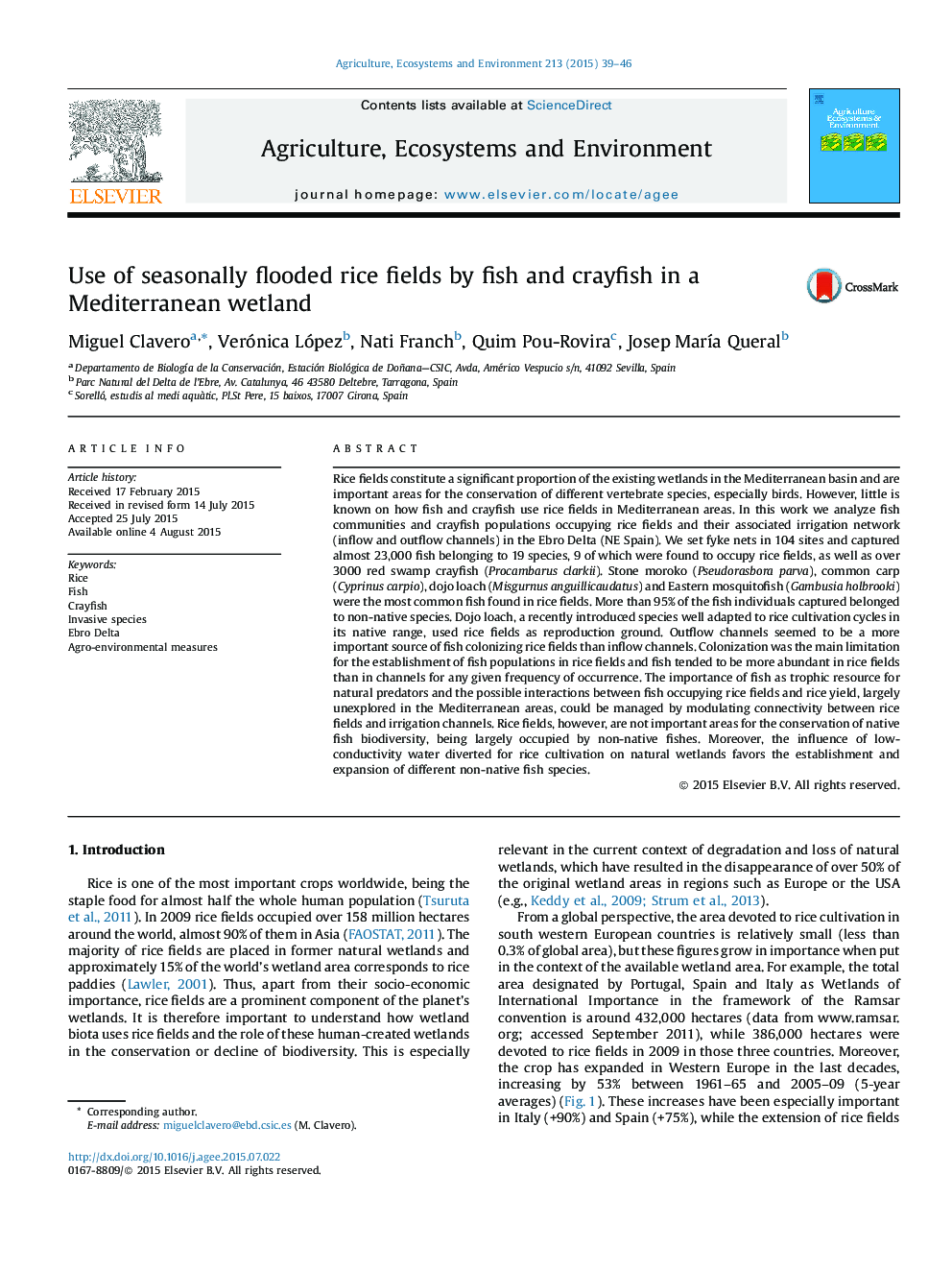| کد مقاله | کد نشریه | سال انتشار | مقاله انگلیسی | نسخه تمام متن |
|---|---|---|---|---|
| 8487573 | 1552039 | 2015 | 8 صفحه PDF | دانلود رایگان |
عنوان انگلیسی مقاله ISI
Use of seasonally flooded rice fields by fish and crayfish in a Mediterranean wetland
ترجمه فارسی عنوان
استفاده از زمینه های فصلی برنج با ماهی و سرخدار در تالاب مدیترانه ای
دانلود مقاله + سفارش ترجمه
دانلود مقاله ISI انگلیسی
رایگان برای ایرانیان
کلمات کلیدی
برنج، ماهی، سرخ گونه های مهاجم، ابو دلتا، اقدامات زیست محیطی،
موضوعات مرتبط
علوم زیستی و بیوفناوری
علوم کشاورزی و بیولوژیک
علوم زراعت و اصلاح نباتات
چکیده انگلیسی
Rice fields constitute a significant proportion of the existing wetlands in the Mediterranean basin and are important areas for the conservation of different vertebrate species, especially birds. However, little is known on how fish and crayfish use rice fields in Mediterranean areas. In this work we analyze fish communities and crayfish populations occupying rice fields and their associated irrigation network (inflow and outflow channels) in the Ebro Delta (NE Spain). We set fyke nets in 104 sites and captured almost 23,000 fish belonging to 19 species, 9 of which were found to occupy rice fields, as well as over 3000 red swamp crayfish (Procambarus clarkii). Stone moroko (Pseudorasbora parva), common carp (Cyprinus carpio), dojo loach (Misgurnus anguillicaudatus) and Eastern mosquitofish (Gambusia holbrooki) were the most common fish found in rice fields. More than 95% of the fish individuals captured belonged to non-native species. Dojo loach, a recently introduced species well adapted to rice cultivation cycles in its native range, used rice fields as reproduction ground. Outflow channels seemed to be a more important source of fish colonizing rice fields than inflow channels. Colonization was the main limitation for the establishment of fish populations in rice fields and fish tended to be more abundant in rice fields than in channels for any given frequency of occurrence. The importance of fish as trophic resource for natural predators and the possible interactions between fish occupying rice fields and rice yield, largely unexplored in the Mediterranean areas, could be managed by modulating connectivity between rice fields and irrigation channels. Rice fields, however, are not important areas for the conservation of native fish biodiversity, being largely occupied by non-native fishes. Moreover, the influence of low-conductivity water diverted for rice cultivation on natural wetlands favors the establishment and expansion of different non-native fish species.
ناشر
Database: Elsevier - ScienceDirect (ساینس دایرکت)
Journal: Agriculture, Ecosystems & Environment - Volume 213, 25 December 2015, Pages 39-46
Journal: Agriculture, Ecosystems & Environment - Volume 213, 25 December 2015, Pages 39-46
نویسندگان
Miguel Clavero, Verónica López, Nati Franch, Quim Pou-Rovira, Josep MarÃa Queral,
